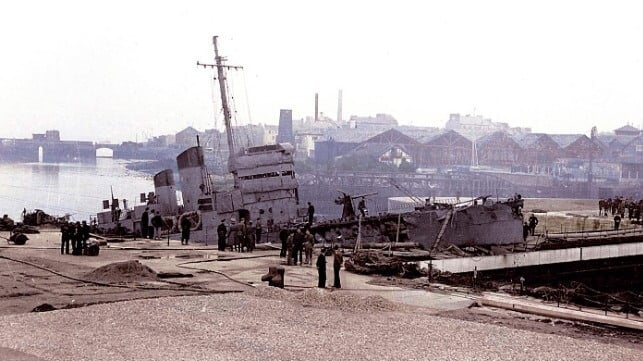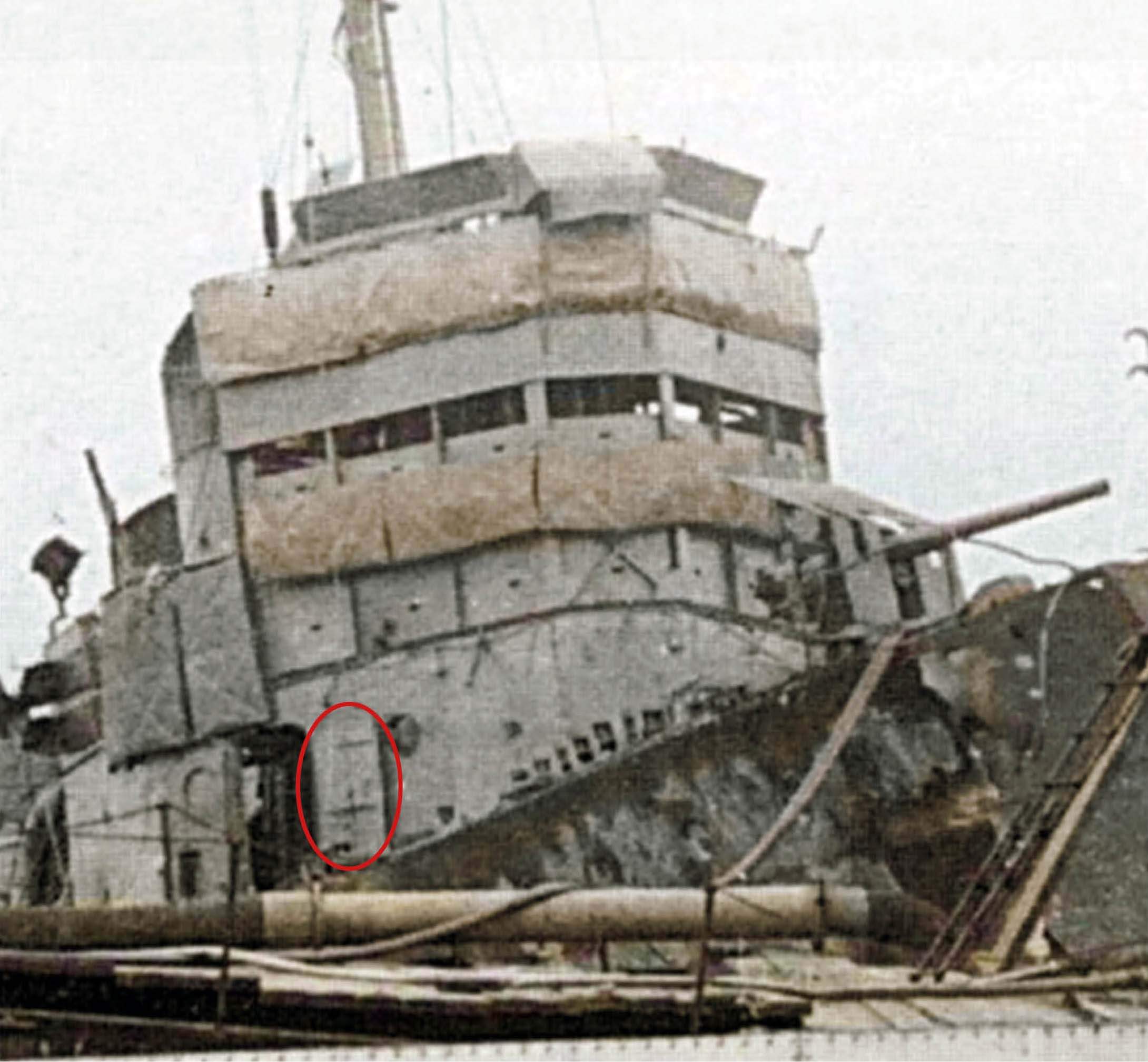Workers Find Rare Artifact From WWII's "Greatest Raid," Operation Chariot

A museum near St. Nazaire, France is now the proud owner of a hatch from HMS Campbeltown, found about 100 yards away from the drydock where the ship's explosive payload detonated in 1942. The hatch came from the starboard side of the Campbeltown's deckhouse, which largely disappeared in the blast.
On March 26 1942, the WWI-era destroyer HMS Campbeltown departed Falmouth on a mission to damage the drydock in St. Nazaire, France, hoping to take it out of service and deny the German Navy a valuable repair yard. Campbeltown was lightened, armed with extra 20mm guns on deck and packed with 4.5 tonnes of explosives in her bow.
In the early hours of March 26, on a high tide, she navigated over the shoals at the entrance to the Loire, and she successfully fooled German defenders for a few minutes by transmitting a German identification code. The ruse only lasted a short while, and she fought her way into the harbor under heavy fire. She rammed the dock gate at 19 knots, driving her bow up onto the structure about 30 feet. After a timed delay of several hours, the charge in the ship's bow blew up, destroying the gates, killing several hundred German personnel, and knocking the giant dry dock out of action for the rest of the war.
She was accompanied by 16 torpedo boats carrying commandos. Most of the launches were destroyed by German fire as Campbeltown made her final run. The survivors landed and blew up dockside installations, destroying much of the infrastructure around the port.
The raid was an unqualified success, but the cost was high. Of the 611 commandos and sailors who took part in Operation Chariot, 169 were killed and 200 were taken prisoner. Only four motor launches out of 16 made it home, and just 242 men returned to Falmouth after the raid.

Marc Braeuer with Campbeltown's No. 6 hatch (Royal Navy)
The hatch is a rare reminder of Campbeltown's victory. During port upgrades at St. Nazaire, workers found the metal panel about 100 yards away from the Normandie Dock, where the vessel's massive bomb detonated. After cleaning it, they found clear markings reading "Door No.6. Collision. Close and Dog Immediately."
The blast-damaged hatch was saved and stored by one of the managers of the seaport. Eventually it came to the attention of Marc Braeuer, director of the nerarby Musée Le Grand Blockhaus. Braeuer and his brother stepped in to take care of the artifact, and they carefully researched its design to confirm its identity. The exterior hatch is visible in one of the few surviving photos of Campbeltown in the hours just before she exploded.
 The exterior bulkhead No. 6 hatch, circled in red (Royal Navy)
The exterior bulkhead No. 6 hatch, circled in red (Royal Navy)
